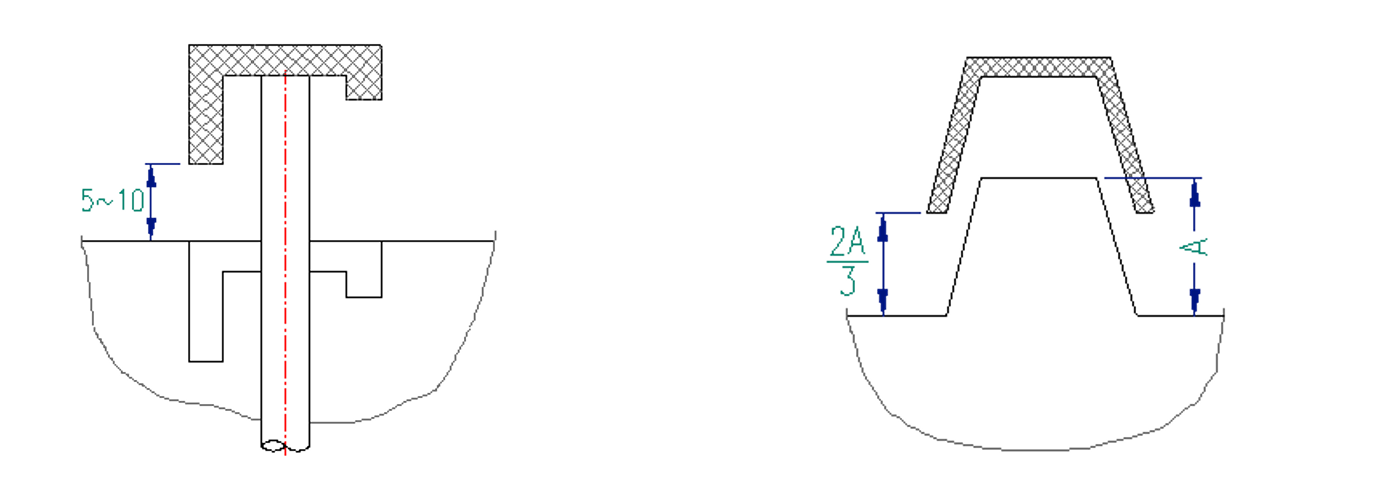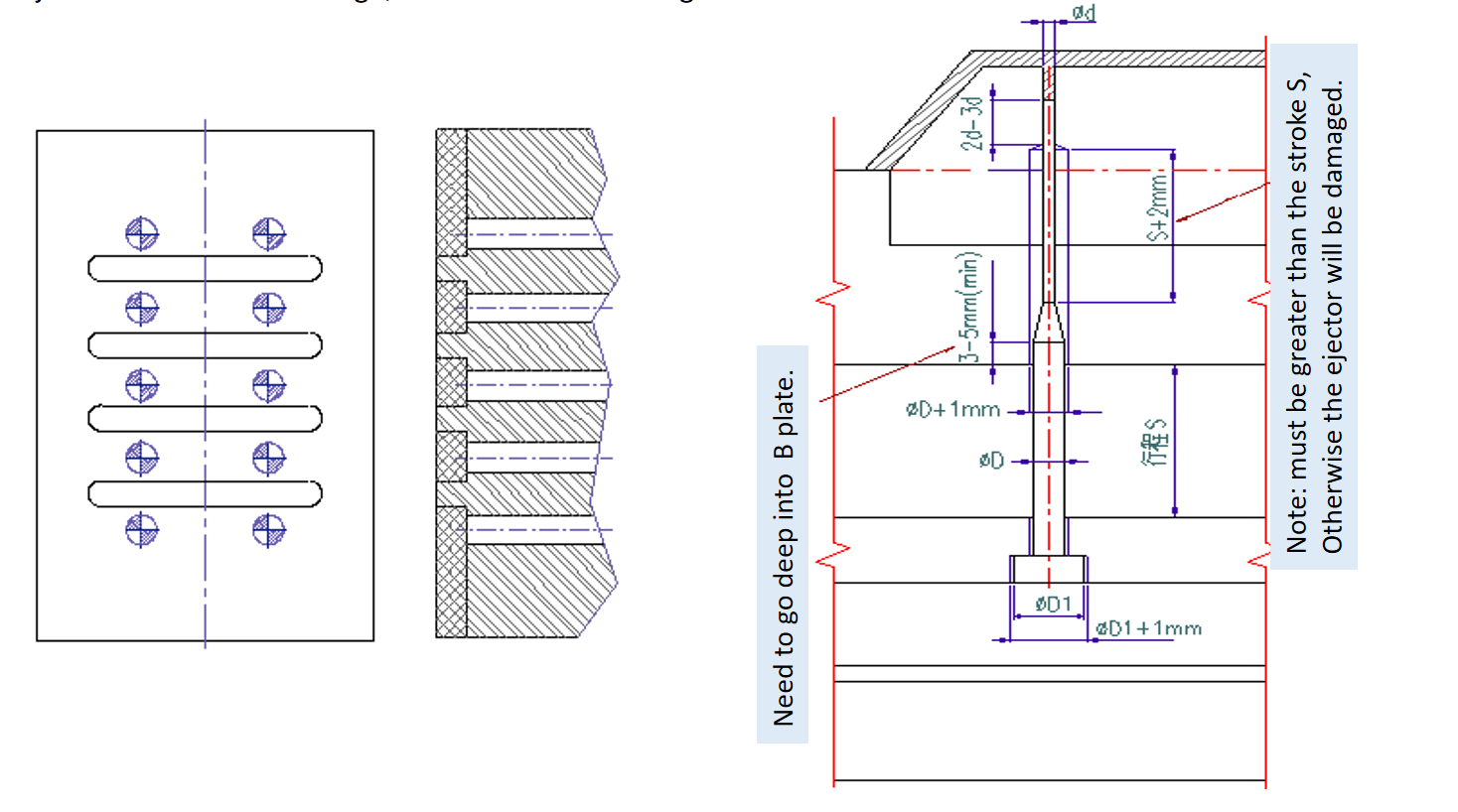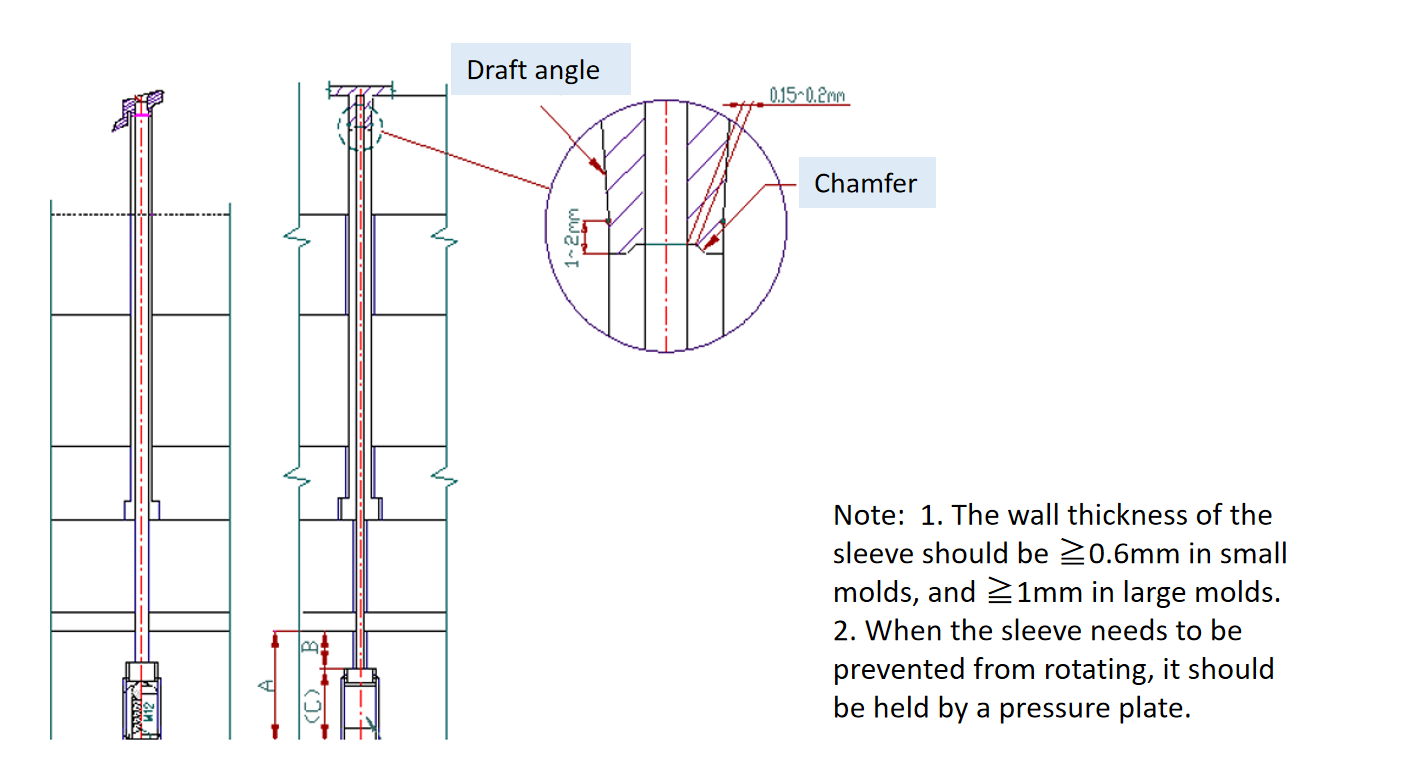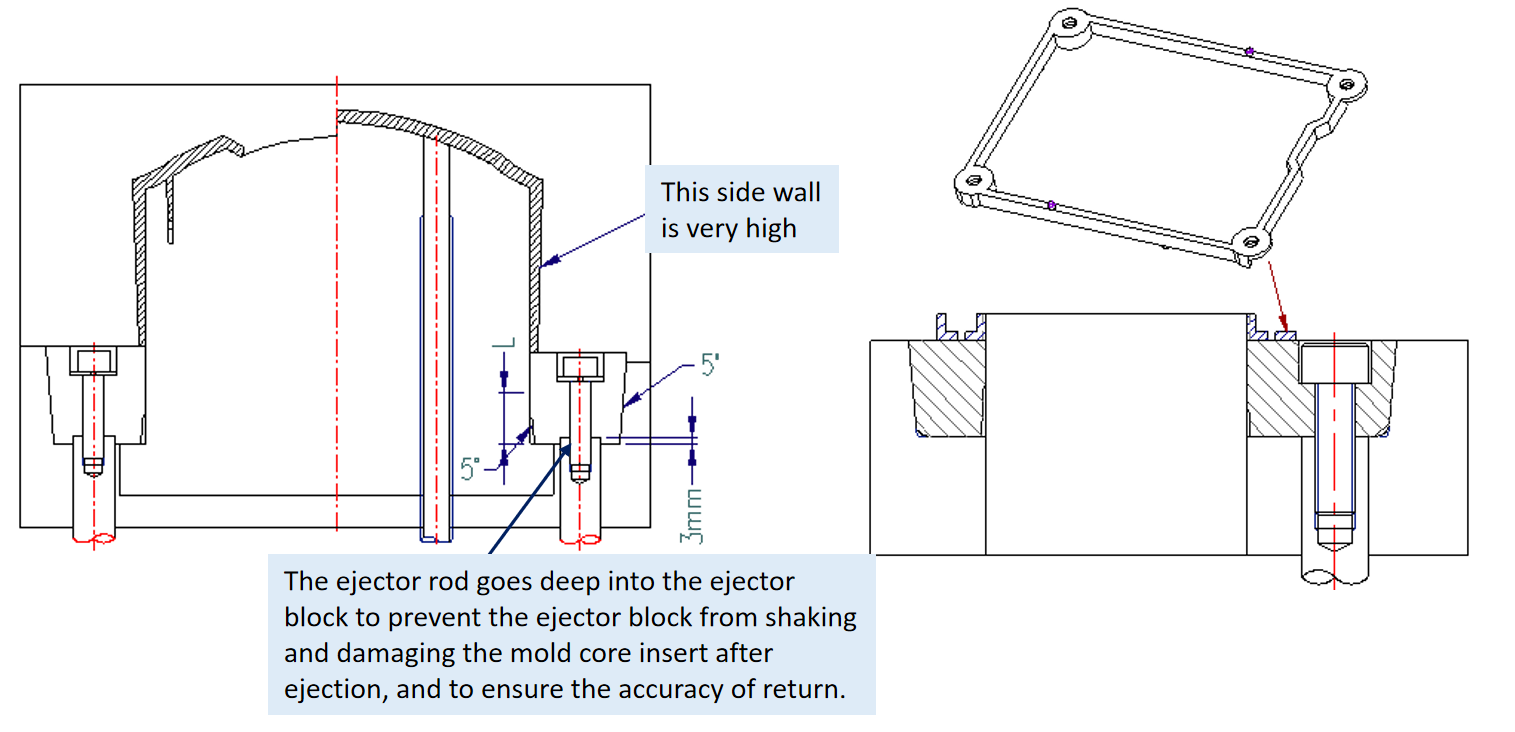Design of the Ejection System of Plastic Injection Mould
A good mold reflects the comprehensive level of a plastic injection mould maker. A good design plastic injection mould requires continuous improvement of various technologies. Today we will talk about the ejection system of the mold.
Based on years of work experience, we have summed up the principles of ejectors arrangement: A, It cannot affect the appearance of the finished product; B. Ejection allows the finished product to be ejected at the most stressed point; C. Always try to arrange ejectors in the flat position of the finished product (avoid on the inclined or curved surface) D. Always arranged ejectors by the big steps of the part (beside the deep rib for example) E. Arranged at the overhang position where it is easy to be broken and deformed when the mold is opened) F. Use a set of ejectors as much as possible in the same mold.
1. Ejection stroke
The ejection stroke generally stipulates that the ejected product is 5~10mm away from the mold. When molding to produce plastic injection molded parts some barrel-shaped products with simple shapes and larger draft angles, the ejection stroke can be 2/3 of the depth of the finished product, as shown in the figure below.
 2. The ejectors position
2. The ejectors position
3. Ejection types
A. The round ejector is the most common ejector components. It has the advantages of simple processing, good strength and long life. However, when the ejection surface of some products is relatively small, the shouldered ejector will be used. The shouldered ejector is mainly aimed at solving the problem that small ejector is not robust enough, to increases the strength of them.
 B. Blade ejectors are mostly used where the ribs of some products cannot be used as round ejectors.
B. Blade ejectors are mostly used where the ribs of some products cannot be used as round ejectors. 4. Ejection blocks:
4. Ejection blocks: 
Categories
latest blog
© Copyright: 2025 Lyter Engineering Ltd. All Rights Reserved

IPv6 network supported